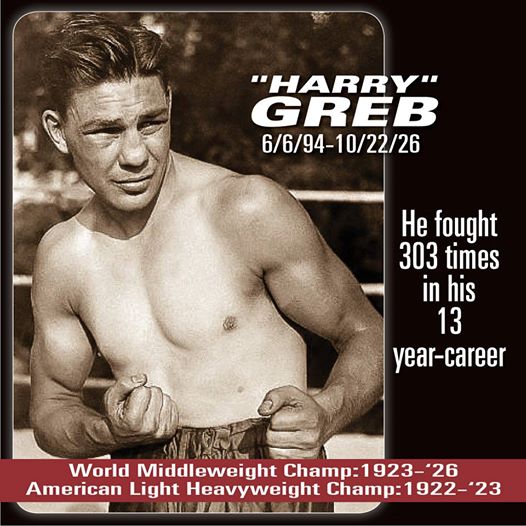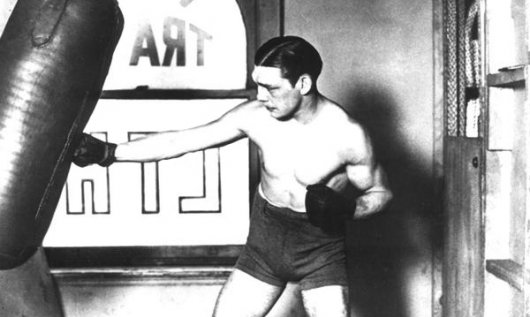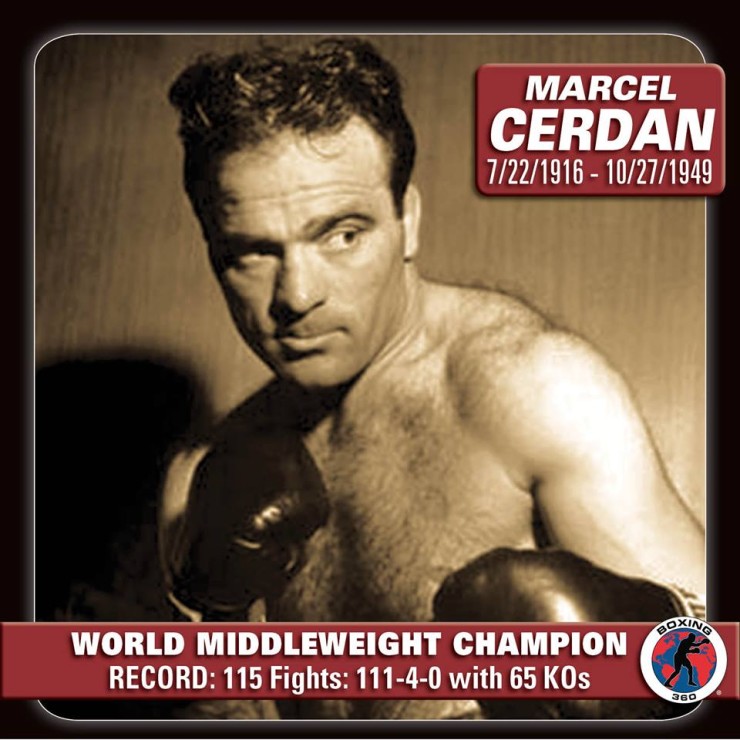Boxing History: September 3, 1924 Harry Greb W 6 Jimmy Slattery, Buffalo.

According to the Pittsburgh Post, Slattery took the fight to Greb and unleashed an accurate two-handed attack to clearly win the first two rounds. He drove Harry around the ring as the crowd roared. Greb held Slattery even in the third, and handed him a severe thrashing in the last three rounds. Jimmy was tired, but kept trying. Greb looked very good as the fight went along.
Some men just look like fighters. They don’t have to make a fist, strike a pose, strut around the place or talk the talk. One look into their eyes, one scan of their features, and you know they’ve got the right stuff.
Harry Greb, like the great Stanley Ketchel before him, looked like a fighter all over. The tight eyes, the harshly scraped hair and the lean body told you at a glance that Greb was a man apart even in the toughest sport of all.
Legions of great pretenders have discovered to their disappointment that you cannot buy, steal or fake what is only given to the chosen few. A mean look and a hard attitude won’t protect you from a harsh dose of reality if you are not cut from the right cloth.
There have been a great many fighters who have tried to imitate Harry Greb and inherit his impregnable armor and fighting heart. Most of them are tucked away and forgotten in boxing’s vast A to Z archives with maybe ten or twelve fights on their log.
If Harry Greb had a dozen fights in a year alone, he was going slow. Nicknamed the Pittsburgh Windmill because of his perpetual motion style, Harry was no less fast and furious in the rate at which he swelled his astonishing ring record. When he was all done, he had jammed 299 fights into the short space of fourteen years, having fought everybody who was somebody in a golden era of teeming talent. Don’t go looking for any padding on Greb’s record. You won’t find it.
For those interested in the finer details of decimal points, Greb averaged 21.5 fights a year, and only the Grim Reaper finally stopped him in 1926. Boxers of Harry’s era had to fight frequently to earn any meaningful money, and winning a world championship didn’t necessarily buy them a ticket to a more leisurely lifestyle. The heavyweight champion was just about the only guy who could afford to take a walk on Easy Street. The difference between the average annual salary of Harry Greb and Jack Dempsey was immense.
A perfect illustration of this fact is that between winning the middleweight championship from Johnny Wilson in 1923 and losing it to Tiger Flowers in 1926, Greb defended his title six times and had fifty other fights besides.






